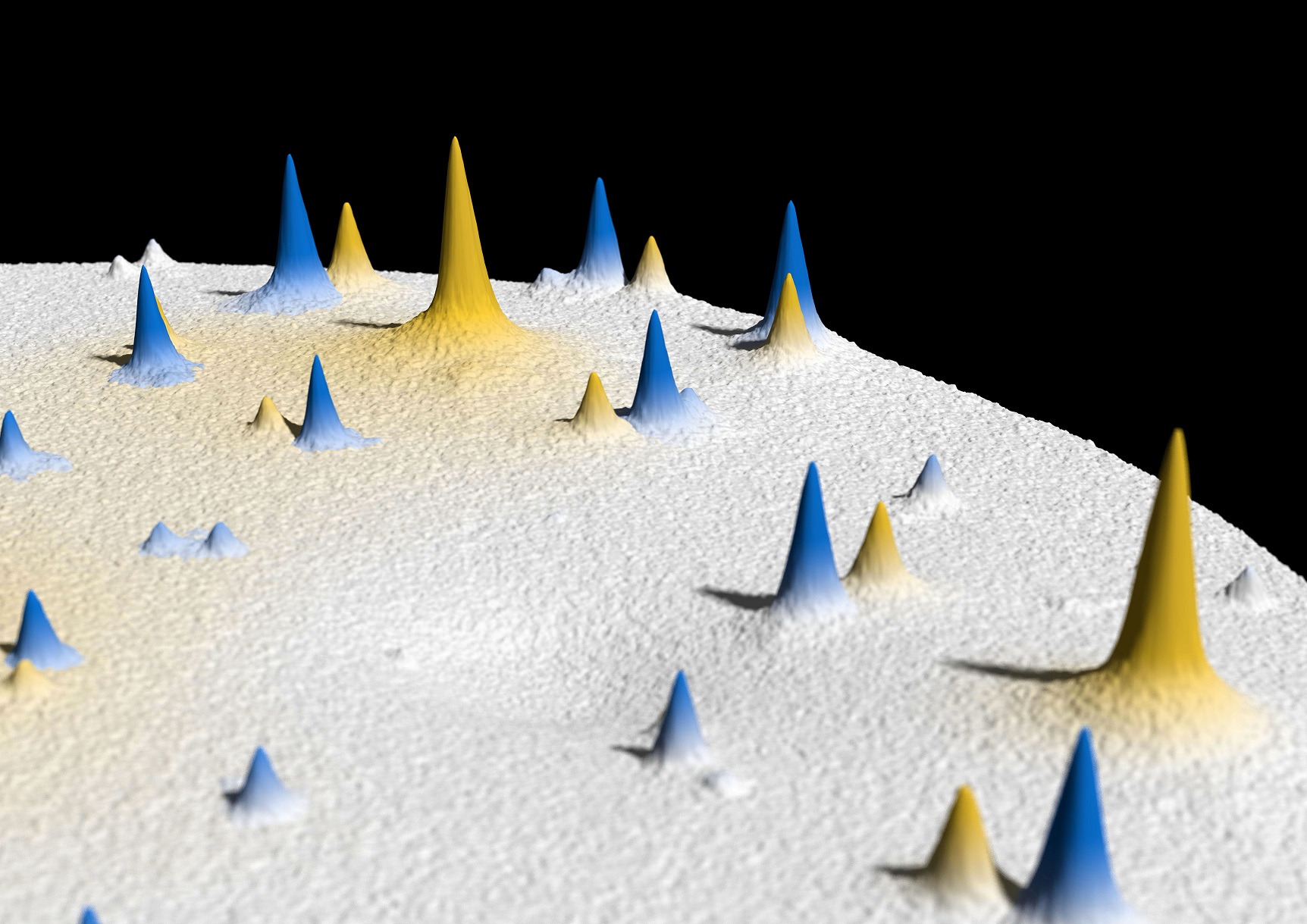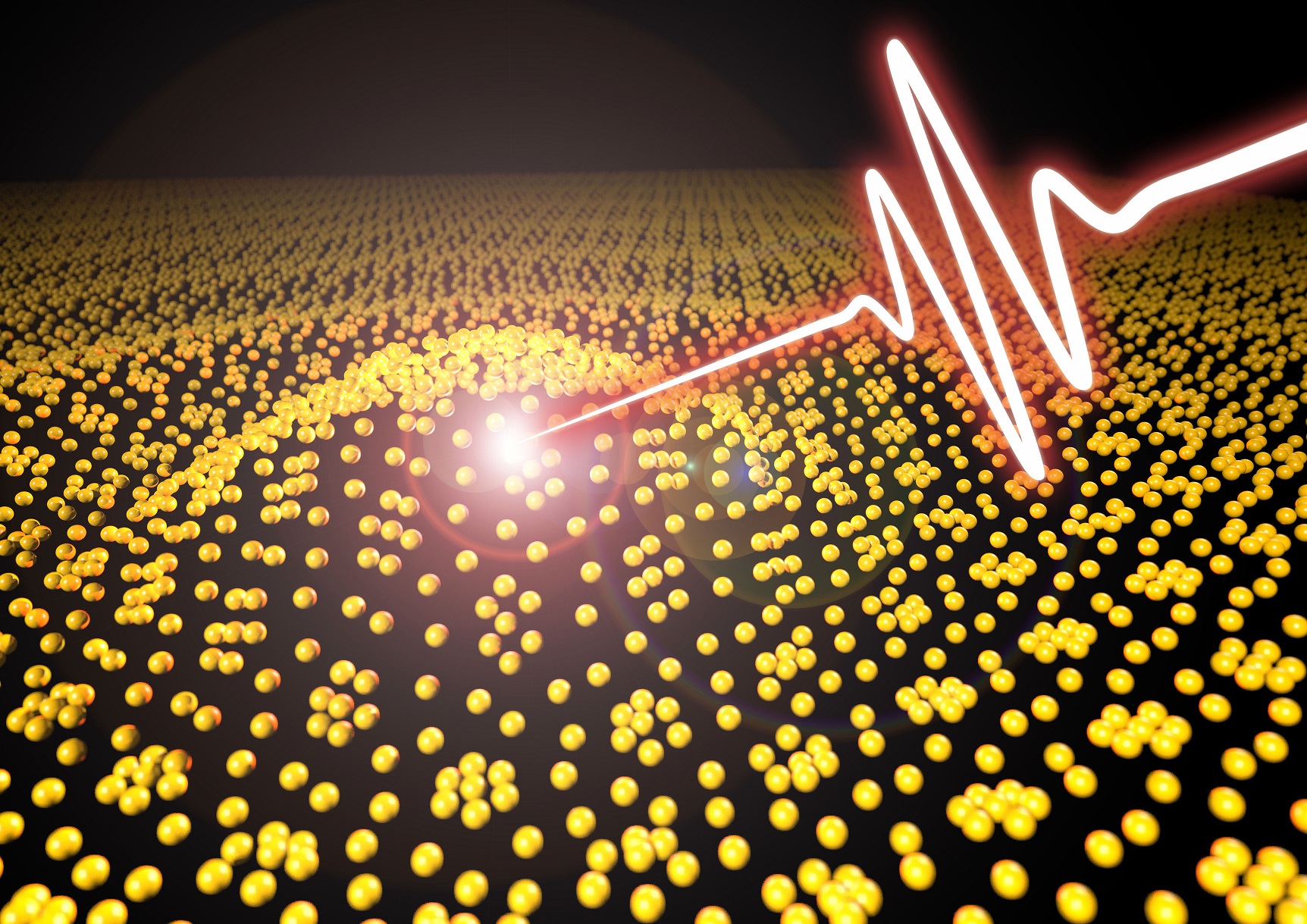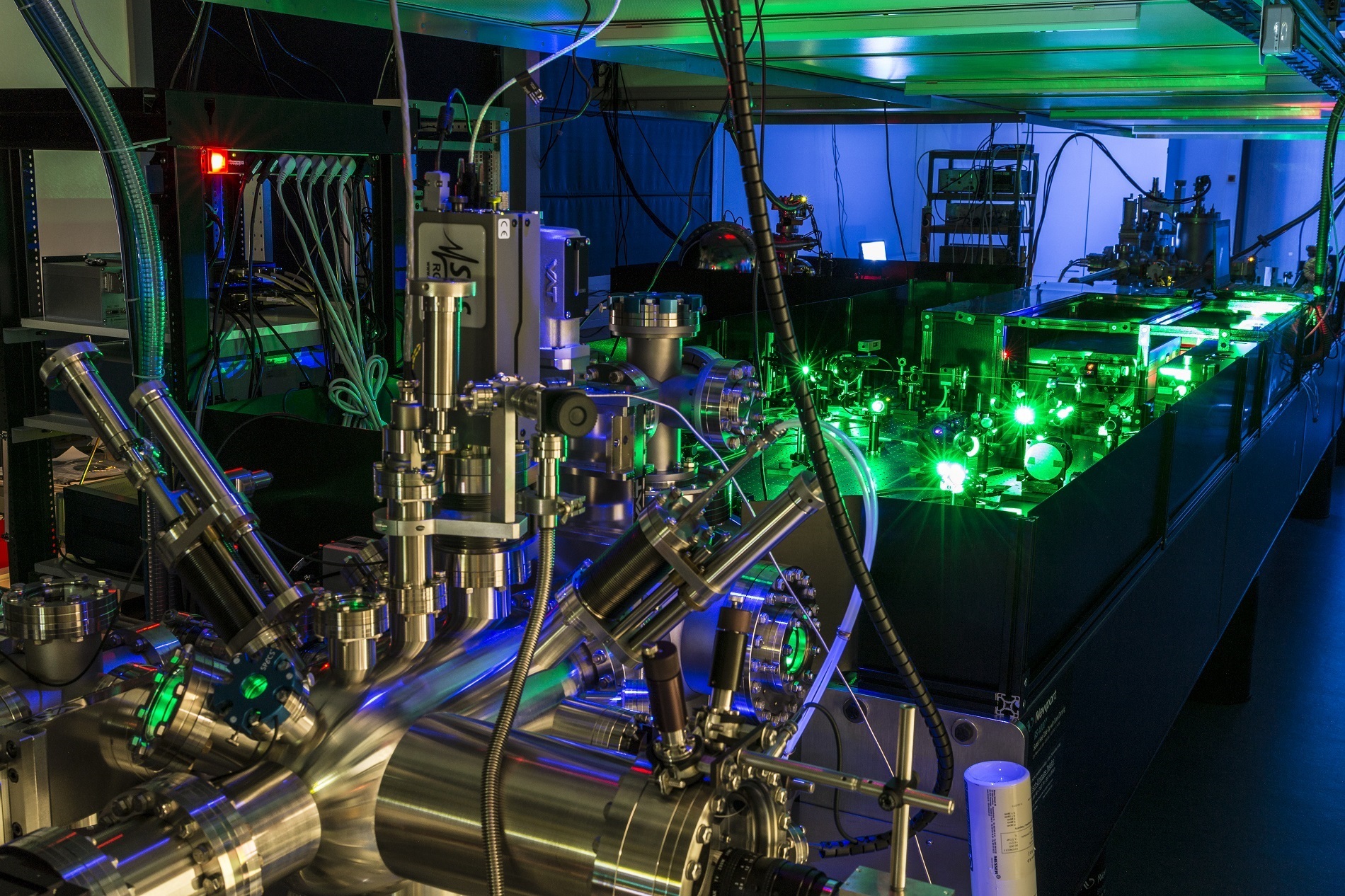06.11.2017
Phase transformations belong to our everyday encounters with physical phenomena like melting, freezing, evaporating and condensing processes. Changes in physical state, however, are merely one special form of phase transformation. In many materials, there are also transitions between different crystalline structures. These different "phases" often have very different mechanical, electronic and magnetic properties. Researchers at Göttingen University have now found a new method that allows the ultrafast transformation between such phases at surfaces to be observed optically. The results were published in Nature Physics.

Representation of the diffraction pattern of electrons scattered on an optically excited material surface. Yellow colored "mountains" signal a growing diffraction intensity, blue mountains are disappearing.
Transformations between different crystalline structures are of great technological importance, as is the case in the hardening of steel or the development of new, switchable materials. A key question concerns the exact way in which the transition between two very ordered but fundamentally different phases takes place. To enable these sometimes excessively fast processes to be studied, the atomic structure of solid bodies is scanned. Professor Claus Ropers’ working group at the IV. Physical Institute of Göttingen University has now developed a method for recording phase transformations in super slow motion.
In the experiments funded by the European Research Council (ERC), ultrashort electron pulses are scattered on solid bodies to record snapshots of the atomic order at surfaces. This new approach particularly stands out due to the low energy of the electron pulses, which are thus very sensitive on the first atomic layers. Simon Vogelgesang, doctoral candidate and lead author of the study, explains: “Realising this type of electron scattering with short pulses is very demanding. Our research team had to design the world's smallest ultrafast electron guns.”

Illustration of the atomic lattice of a surface in which a phase change is triggered by a laser pulse.
The new possibilities were initially tested on a material produced by Professor Kai Rossnagel’s group at Kiel University. “In our experiments, we observed that during the transition between two ordered phases, there is a very short time period dominated by a lot of disorder and high-density structural defects," explains Ropers. "These topological defects and their role in phase transformations have been the focus of great interest for a long time." In future, physicists from Göttingen aim to further increase the temporal resolution and apply this methodology to a broad class of processes at surfaces.
Original publication: S. Vogelgesang et al: Phase ordering of charge density waves traced by ultrafast low-energy electron diffraction. Nature Physics 2017, dx.doi.org/10.1038/nphys4309













